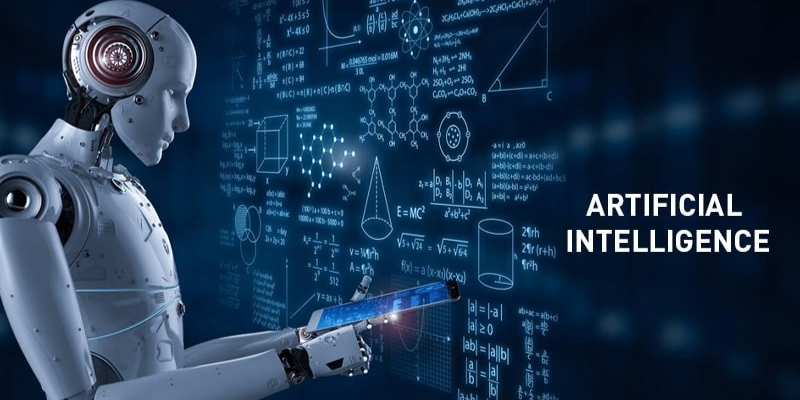Artificial intelligence (AI) involves the theory and practice of programming computer systems to learn from and identify patterns in data sets. These algorithms and models can perform tasks typically done by humans, such as recognizing speech or images and making decisions. AI depends on machine learning and neural networks and incorporates advanced concepts like deep learning and natural language processing. Here, we will discuss How Does Artificial Intelligence Work. Enrol in the Artificial Intelligence Course in Delhi at FITA Academy, which offers comprehensive training in mastering Machine Learning Algorithms.
AI is a sophisticated technology offering countless possibilities for developing solutions across various industries. It drives algorithms that enhance our lives, such as generating transcripts of Zoom calls. Using generative AI, prompts can be generated to solicit content from processors such as ChatGPT.
Understanding how AI works
AI technology is advanced and highly beneficial for businesses. HubSpot has integrated AI into its software to enhance existing workflows.
Input
Data is initially gathered from diverse sources, encompassing text, audio, videos, and other formats. It undergoes categorization into segments readable by algorithms and those that are not. Subsequently, protocols and criteria are established to determine which data will be processed and utilized to achieve specific outcomes.
Processing
After gathering and inputting data, the next step involves enabling AI to determine its course of action. AI analyzes and interprets the data using learned patterns, identifying similarities among the filtered data within the system. Explore the Artificial Intelligence Course in Ahmedabad for optimal training with career guidance to delve deeper into Artificial Intelligence and its practical applications.
Outcomes
Following processing, AI utilizes these patterns to forecast customer behavior and market trends. During this phase, AI is programmed to assess whether specific data aligns with past patterns, categorizing it as either a “pass” or “fail”. This determination informs decisions based on the outcomes generated.
Adjustments
When AI encounters unsuccessful outcomes with datasets, it learns from these instances, prompting iterative refinement under different conditions. Adjustments may involve refining the algorithm’s rules or making slight modifications to the algorithm itself to better fit the specific data set. This iterative process may entail revisiting the outcomes step to align more closely with the current conditions of the data set.
Assessments
The final step in AI completing an assigned task is assessment. In this phase, the AI technology synthesizes insights from the data set to predict outcomes based on adjustments made. Feedback obtained from these adjustments can be integrated into the algorithm before proceeding further.
Fields that Constitute AI
Artificial intelligence systems utilize algorithms and data to recognize patterns and make predictions. Initially, large datasets are collected and applied to mathematical models, or algorithms, through a process called training. Once trained, these algorithms are deployed in applications where they continually learn and adapt to new data. This iterative process enhances AI systems’ ability to perform tasks such as image recognition, language processing, and data analysis with increasing accuracy and efficiency over time.
Machine Learning
AI systems heavily rely on machine learning (ML), allowing computers to learn from vast datasets to recognize patterns and relationships. ML algorithms employ statistical techniques to improve performance over time without specific programming for each task. They use historical data to predict new outcomes and encompass both supervised and unsupervised learning techniques. You can join the Artificial Intelligence Course in Jaipur, which will help you grasp machine learning models and more about them.
Neutral Networks
Machine learning often utilizes neural networks, algorithms that simulate the human brain’s structure to process data. Adjusting the connections’ strengths enables the network to identify intricate patterns in data, predict outcomes from new inputs, and improve based on errors. Neural networks are valuable for tasks like image recognition, speech understanding, and language translation.
Deep Learning
Deep learning, a subset of machine learning, employs deep neural networks with multiple hidden layers to process data deeply, enabling machines to recognize intricate patterns, establish connections, and optimize input for superior outcomes. It excels in tasks such as image and speech recognition, as well as natural language processing, playing a pivotal role in advancing AI systems.
Natural Language Processing
Natural language processing (NLP) teaches computers to comprehend and generate written and spoken language like humans. It integrates computer science, linguistics, machine learning, and deep learning to analyze unstructured text or voice data, extracting pertinent information. NLP focuses on tasks such as speech recognition and natural language generation, applied in applications like spam detection and virtual assistants.
Computer Vision
Computer vision applies machine learning techniques to analyze and derive insights from raw images, videos, and visual data. Utilizing deep learning and convolutional neural networks, it categorizes pixels to distinguish visual shapes and patterns. This technology powers tasks such as image recognition, classification, and object detection, crucial for applications like facial recognition in autonomous vehicles and robotics.
Artificial Intelligence leverages algorithms and data to recognize patterns, make predictions, and continually improve through machine learning techniques. The Artificial Intelligence Course in Kolkata helps to gain expertise in AI techniques.
Also Check: Artificial Intelligence Interview Questions and Answers

